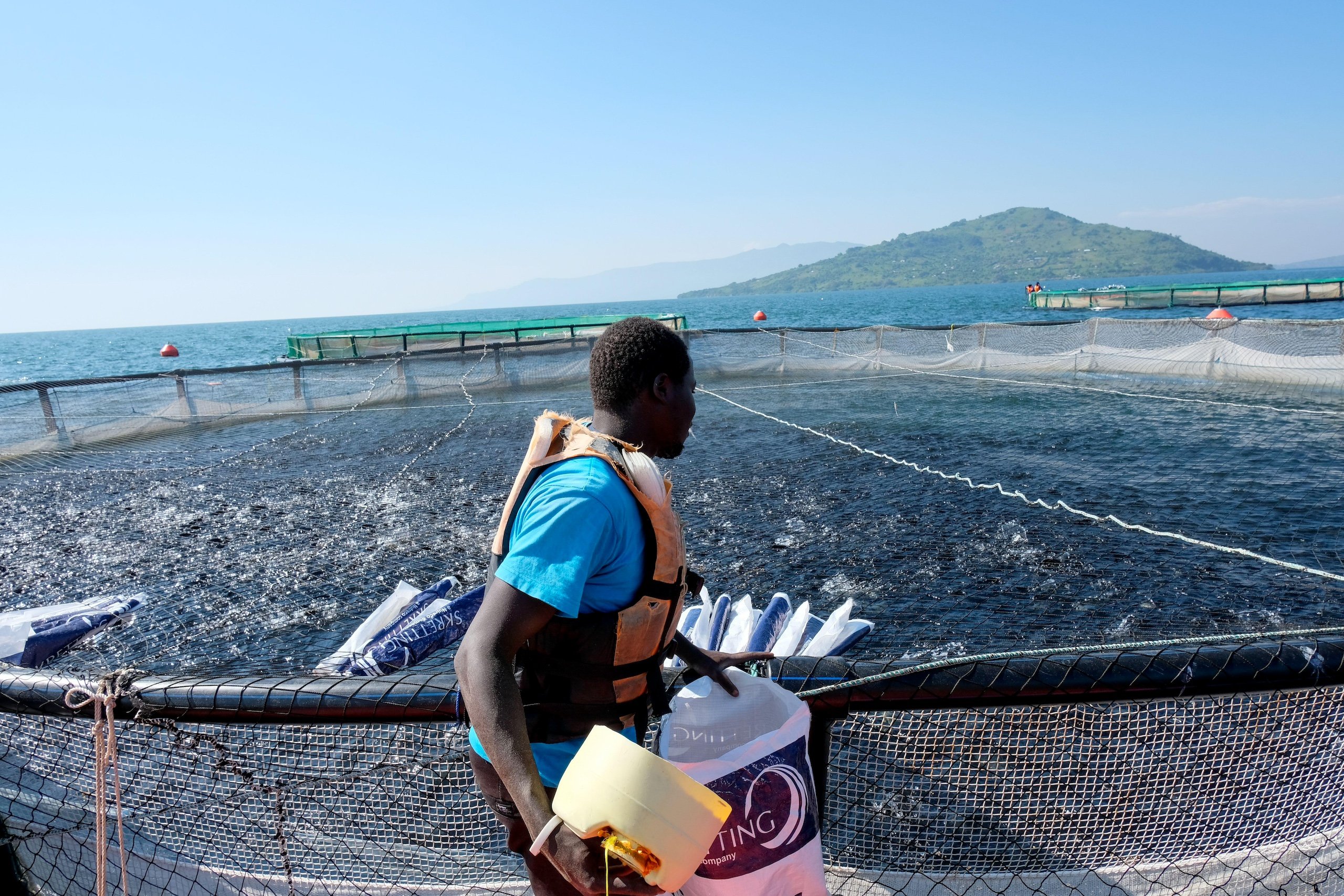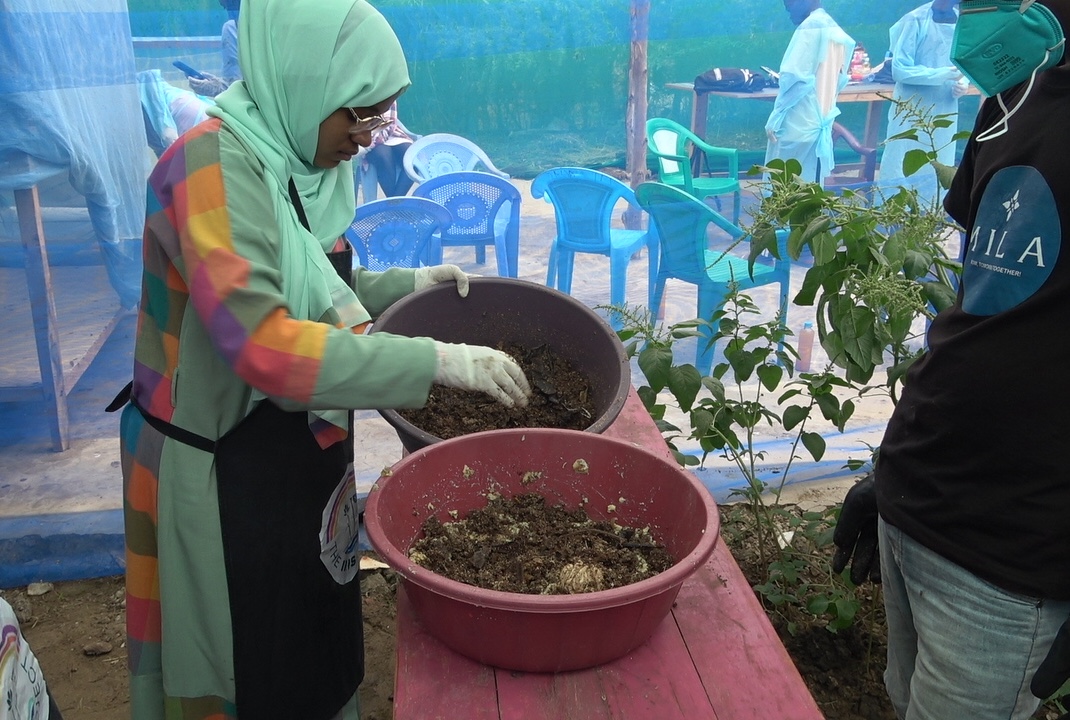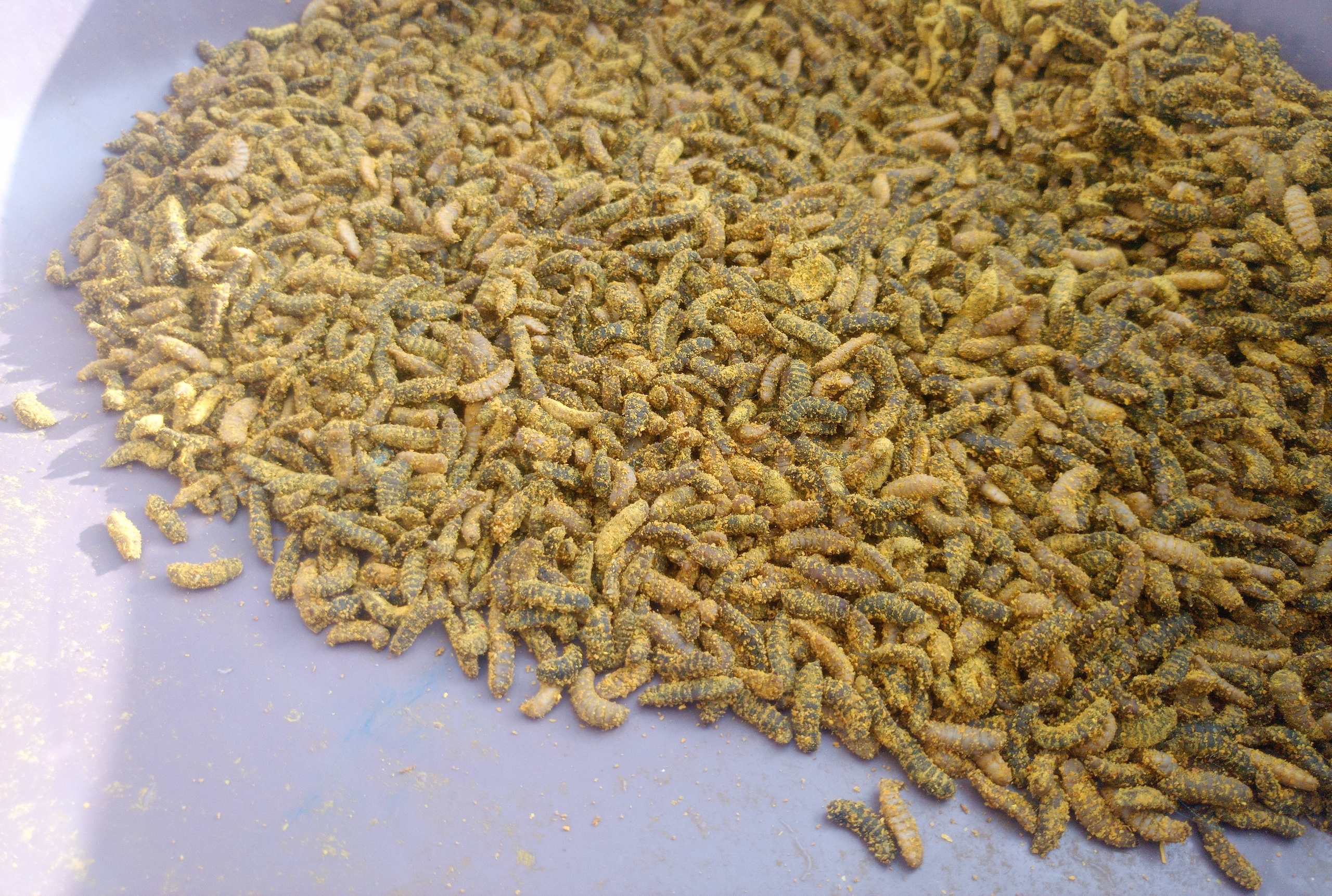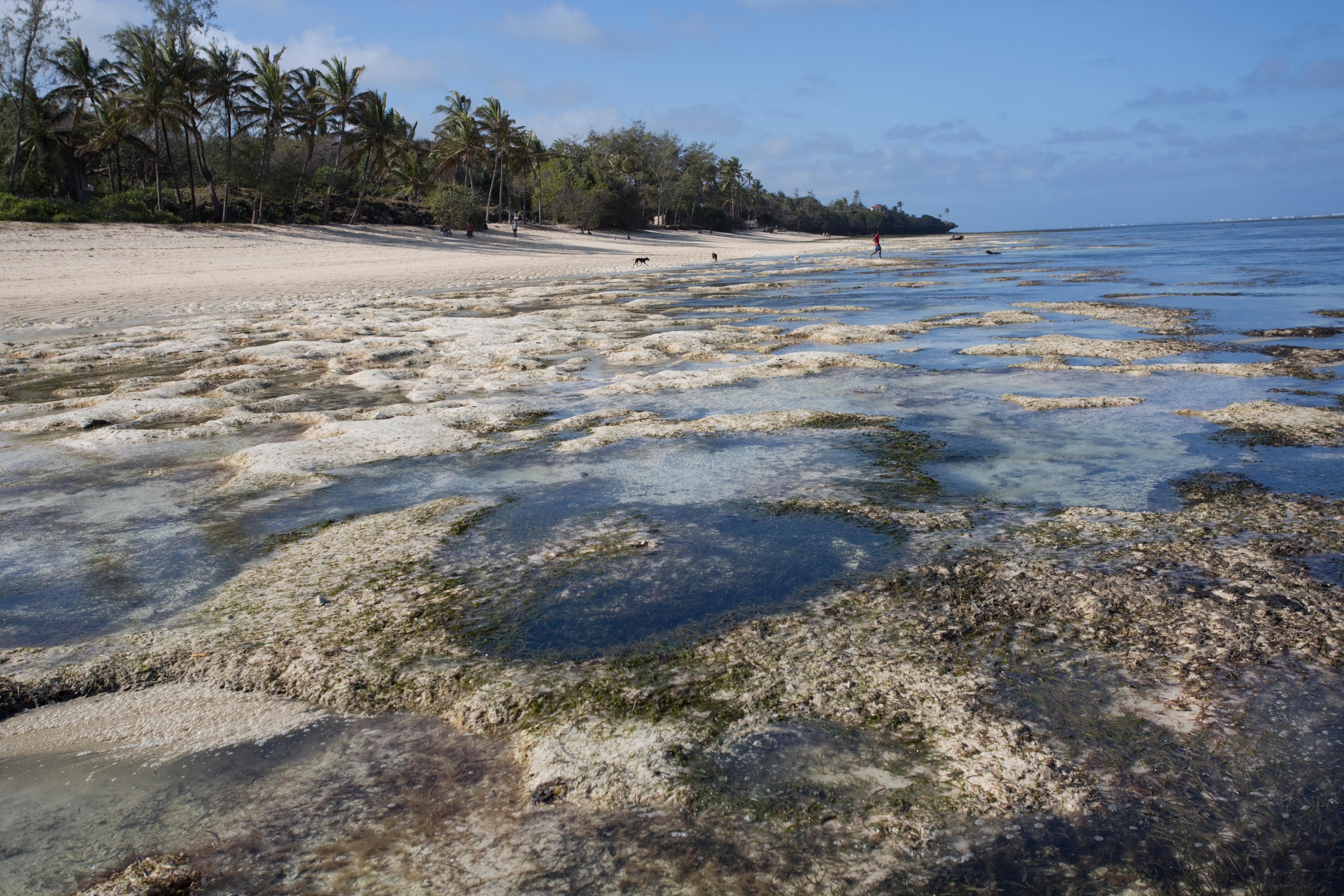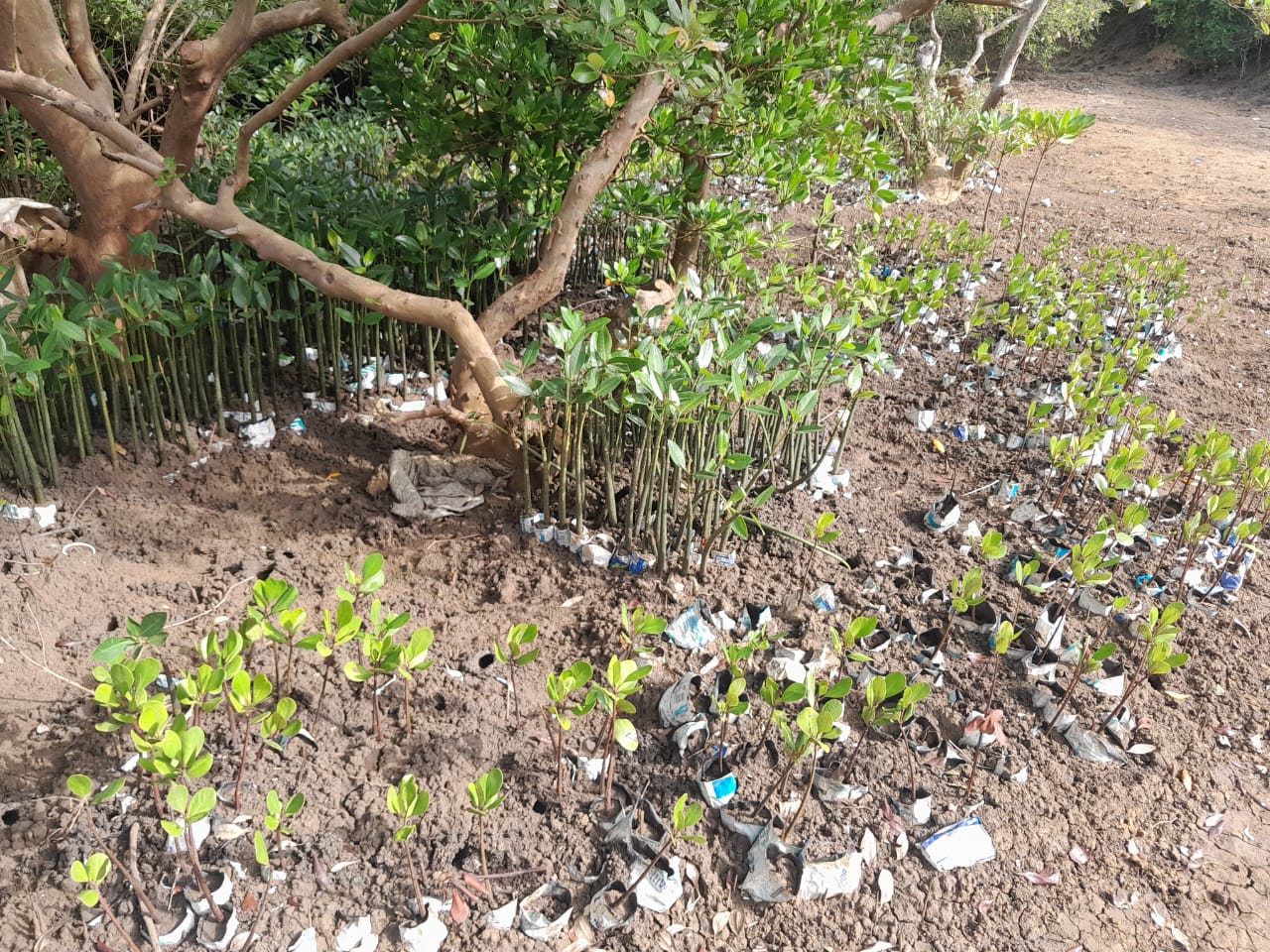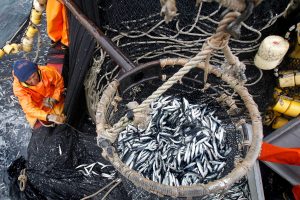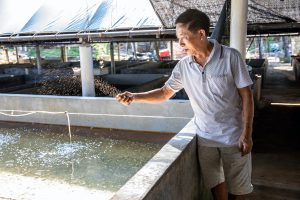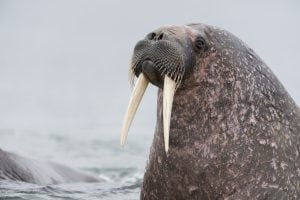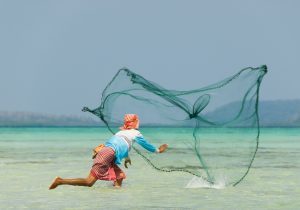A group of young Kenyans has pinpointed an unusual solution to the problems of food waste and fish feed produced unsustainably from wild-caught fish stocks: maggots.
The larvae of the black soldier fly are devouring unwanted food in projects around the world. Their excrement, known as frass, can be used as a fertiliser for land-based crops, and their protein-rich bodies, harvested before they turn into flies, can be fed to livestock.
In Kenya, the environmentalists behind Project Mila, which in Swahili means tradition, are employing the larvae to clean up food waste, as well as nurture mangroves and feed fish in coastal farms.
Waste not, want not
Project Mila’s team of volunteers collect organic waste from households, markets and restaurants in the southeastern coastal city of Mombasa and feed it to voracious larvae, which produce frass while helping to clean up the city.
Nusra Abed, co-founder of Project Mila and a community health promoter, says she was “perturbed by the number of sanitation-related infections within the community due to poor waste management, and wanted to be part of the solution”.
According to a report by the UN Environment Programme, Kenya has some of the highest levels of household food waste in the world, producing between 40 and 100 kilogrammes per person annually.
Apart from alleviating the problem of food waste, the frass has also been helping small-scale farmers in the Mombasa area increase their crop growth and diversity. It enables farmers to diversify away from planting coconuts – a commonly grown crop which is slow to mature – into fast growing produce including onions, tomatoes and other fruits. This offers them the opportunity to earn extra income through farming that’s sustainable and organic, and selling their surplus harvest in markets, notes Roselyne Mwachia, a marine and fisheries researcher working with Project Mila.
The use of frass in farming has also made the activity less harmful for the environment and improved the catch of nearby fishers, fishing being the most common economic activity for people living along the Kenyan coast.
In areas like Mariakani and Mazeras, 38 kilometres west of Mombasa, upstream smallholder farmers were using chemical-based fertilisers prior to the switch to frass, which polluted the marine ecosystem when washed into the water after storms, explains Mwachia. “This affected… marine species, as well as caused bleaching of coral reefs and death of mangroves, seagrass and seaweeds,” she tells Dialogue Earth.
“Coral reefs are fertile breeding grounds for marine species, and when bleaching happens, it means breeding will be impacted and marine stocks will reduce,” she adds. But with farmers shifting to frass, Mwachia notes that “fishers around areas where we have worked are reporting reduced coral bleaching and increased fishing fortunes due to reduced pollution”.
Making more mangroves
As well as reducing the pollution reaching the sea, Project Mila is trying to cultivate healthy marine ecosystems more directly.
Kenya’s mangrove forests grow roots that protect the shoreline from erosion, provide a habitat for marine species, and are highly effective at locking up carbon dioxide. However, the country’s mangroves are steadily being eroded. Recent estimates are hard to come by, but between 1985 and 2010, Kenya lost an average of 0.7% of its mangrove cover annually, according to a 2011 study. The harvesting of firewood has been cited by Kenya’s Ministry of Environment as being one of the leading causes of mangrove deforestation in the country.
Many families along the coastline rely on mangroves as a source of fuel and charcoal to sell, says Ahmed Abeid, a Project Mila coordinator. “Having families engaged in alternative activities like organic farming is helping reduce the pressure [on mangroves].”
The project plans to start using the frass to make briquettes, which could replace mangrove wood as a fuel source, he adds.
Project Mila is also working directly to restore mangroves. Frass is used to nurture mangrove seedlings in nurseries, which are then planted out in areas prioritised by the Kenya Marine and Fisheries Research Institute (KMFRI) and the Kenya Forest Service due to their high levels of forest degradation. These zones include three creeks on the outskirts of Mombasa – Bidii, Turdo and Mtwapa.
Rose Chiteva, a senior research scientist at the Kenya Forestry Research Institute, says soldier fly frass has been helping mangroves to thrive: “Mangroves planted using frass are showing a faster growth and higher survival rate [as it] helps in neutralising the acidity of the soils within the mangrove forests.”
Spurring sustainable aquaculture
The maggots have also been attracting the attention of Kenya’s fish farmers.
Globally, aquaculture has gained a bad reputation for its unsustainability, especially relating to the widespread practice of turning wild-caught fish into food for captive-bred fish. But production of fish feed from fly larvae can potentially reduce dependence on traditional fishmeal derived from wild stocks, notes Mary Opiyo, a senior aquaculture research scientist at KMFRI, a state body.
“This is one way of promoting sustainable aquaculture and reducing overreliance on marine stock,” she says.
Kigen Compton is the founder of BioBuu, a company producing fish feed from black soldier fly larvae in Kenya and Tanzania. He says that “with easily accessible, available and affordable feeds, many farmers are shifting to sustainable aquaculture and moving away from wild fishing”.
With easily accessible feeds, many farmers are shifting to sustainable aquaculture and moving awayKigen Compton, founder of BioBuu
from wild fishing
The larvae have been catching on with aquaculture workers further afield, too.
In Colombia, rural populations are earning sustainable livelihoods through frass-fed insects which are being used as feed in fish farming, while a company in Finland says producing fish feed from the larvae is the “perfect solution” for future aquaculture. Researchers in the US recently made some calculations regarding the country’s aquaculture industry. They found that if soldier fly protein was fed to salmon, trout and shrimp to the maximum extent without impairing the fish, 40,843 tonnes of wild fish could be spared every year.
Flies in the ointment?
As the maggots take root in aquaculture, some see trouble ahead.
David Mirera, a senior research scientist at KMFRI, says there is a risk of disease if proper hygiene guidelines are not followed during the production of such fish feed.
“We do not have a clear regulatory framework and controls on black soldier fly rearing, and this might compromise the quality of feeds being produced, especially by those who are not professionals in the sector of feed formulation and production,” he says.
But many fish farmers in his country are already firm fans of the flies, citing their convenience and secure yields. Juma Mashanga is one of them. He helps lead a group of community fishers who are farming fish in cages in the Indian Ocean near Kwale, a town 30 kilometres south-west of Mombasa.
“With cages, there is a guarantee of harvesting at maturity, and the returns are good,” he says. “Sustaining the cages and feeding the fingerlings is manageable because we can process our [black soldier fly] protein feeds at home.”
